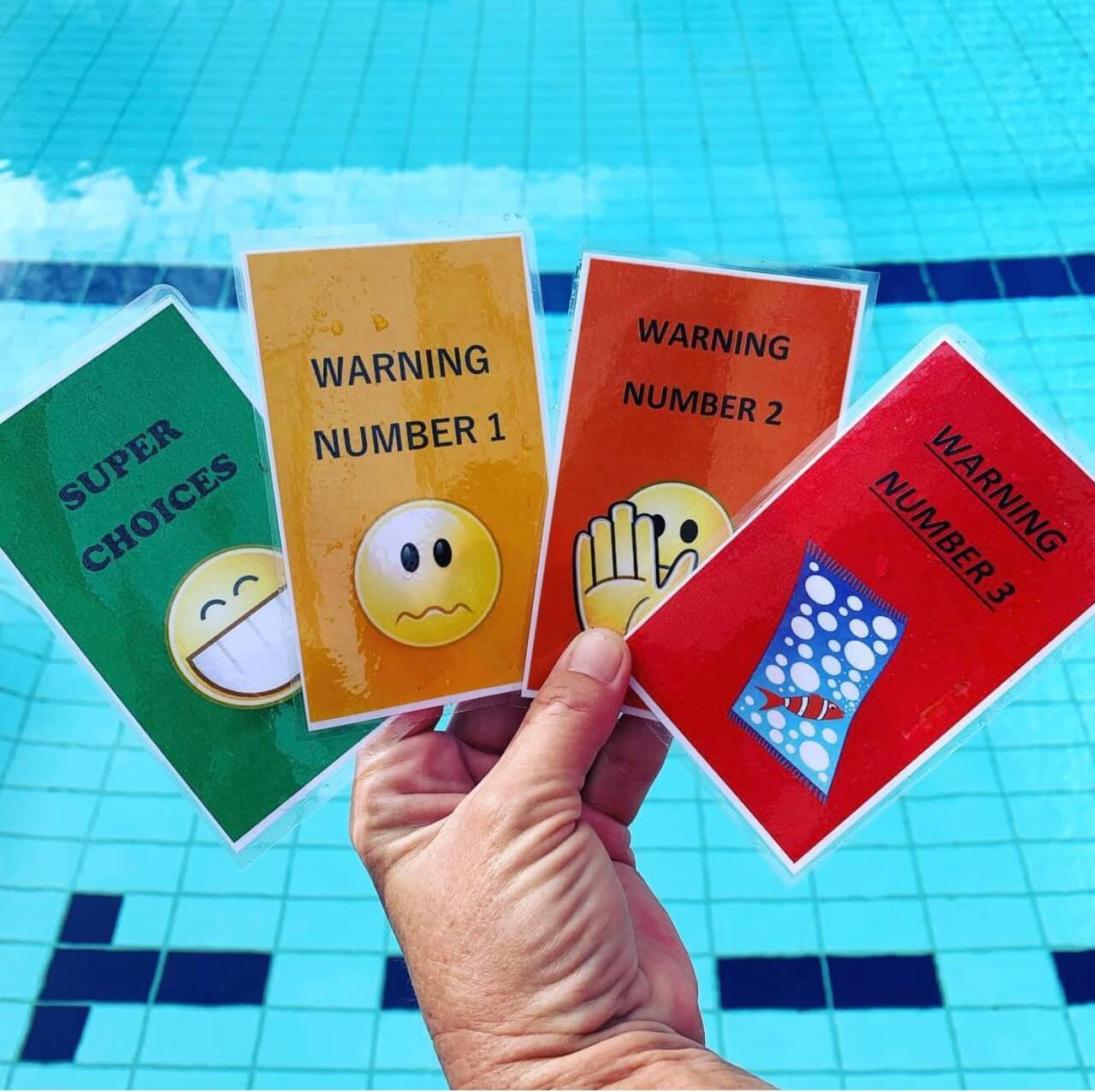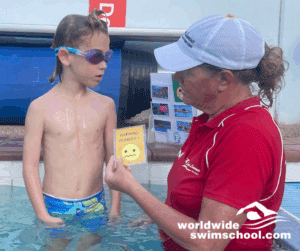Behaviour management is one of the most challenging aspects in the learning environment. To minimise challenging behaviour, we have developed some teaching tools you can use on pool deck. When using these tools, you must remember that they may take time to implement in the beginning. However, when used consistently, positive outcomes will be achieved.
Vision Board and Finger Counting
Using a vision board sets the scene for the student by using simple, recognisable images. This is a visual lesson plan that is easy to follow and gives students advanced information which can be processed ahead of time. These cards are used to indicate how many skillsets the student needs to engage in.
Some students tend to be focused on the number more than the task being asked. Others feel calmer when they know what is being asked of them. Using the finger cards allows the student to know how many skill development tasks are needed until completed.
Remember, some students identify with counting either forward or backwards, so you need to determine this before implementing.

Behaviour Cards
When using warning cards, it will help the student take ownership of their behaviour. It is perfect for students to decide their behaviour outcomes, i.e., make good choices or you will have to hop out and get your towel. Always start on the green ‘good choices’ card. Each student then has two warning cards before they must exit their lesson. These coloured cards can be interchanged.
For example, if a student displays challenging behaviour, they will receive a warning card. But if they demonstrate good behaviour thereafter, the card changes back to the green ‘good choices’ card. We use the words ‘good choices’ instead of ‘good girl’ or good boy,’ to teach them their behaviour is always a choice.

Skill Development Sheet
Most behaviour has a pattern that has formed over time. Therefore, by using the skill development sheet, you will be able to look over pervious lessons to see if a pattern can be identified. When using this teaching tool properly, you can also identify engagement and progression of skills.
This is one of the best teaching tools you can possess, as you havethe knowledge of your students’ lessons.
The Mindful Mat
This behavioural tool was developed for students to have a safe place for regulation. We chose the colour green as it is the same colour as the ‘good choices’ behaviour card. We also call it the ‘happy’ zone on the regulation chart, as it represents positivity. For students who find it difficult to indicate when they are becoming anxious or overwhelmed, the mindful mat becomes a safe place to take some time to settle.
In our program, students let the teacher know they would like to go on the mindful mat. Once here, they are then given 30 seconds to a minute before they must engage back into the learning environment. In addition, they are encouraged to use the mat as many times needed. It's important to note that adequate time is taken when introducing this tool to students as we don’t want it to be mistaken for a negative timeout.
Regulation Chart
Students who struggle with emotions, or don’t know how to verbally express how they are feeling, will embrace this behavioural system. Widely used in education and therapy settings, students should be able to identify with the zones. If not, it's important to take time to go through all the images and identify the emotion attached to the image. Explain that the emotions in the ‘green’ zone is where you would like them to be.
If they are indicating other emotions in the other zones, take the time to teach them how to get back into the ‘green’ zone. Do they need time on the mindful mat, would less skill sets help, is more support needed or less instructional words? Together, you will achieve getting back into the ‘green’ zone. Communication is key with this tool, so always have it accessible to your students.
Build your own tool kit today with our behavioural learning tools packs.





